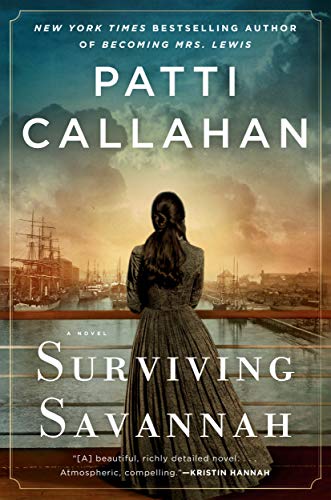Surviving Savannah
One hundred and eighty years after the steamship Pulaski exploded at sea, history professor Everly Winthrop is asked to curate a museum collection on newly discovered artifacts. As she researches the artifacts and attempts to solve its mysteries, she learns about the Longstreets, a prominent Savannah family who were on the Pulaski, and two known survivors, Augusta Longstreet and her niece Lilly Forsyth. As she delves into their stories, she also grapples with the hit and run death of her closest friend over a year ago, which has left her emotionally paralyzed and scarred.
Patti Callahan alternates between the modern-day story about Everly and her search for the clues and information about the Pulaski and the Longstreet family, and the 1838 story, featuring Augusta and Lilly. Of the two, the historical stories win hands-down. Both Augusta and Lilly are women of their times, dependent on their family, especially the males, but their struggles at sea after the boiler explosion, and amid the fear and heavy loss, reveal courage and a resilience to survive that elevates them and brings on newfound strength. I was especially taken by Lilly’s story and her response to her abusive husband. I could not get into the modern-day story mainly because I didn’t care for Everly or the oftentimes melodramatic responses and stereotypical characterizations. Whatever personal growth came from Everly’s ultimate awareness, spurred by the knowledge gained about the Pulaski survivors, was outshined by the depth of the historical stories and the women and their development.










